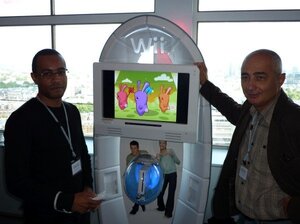
The WiiWare service has been growing from strength to strength, with a truly varied range of games covering almost every genre and demograph; however, if there is one market that has yet to be tapped into on this service, it is that of children’s games. With today’s release of Learning with the PooYoos Episode 1, Lexis Numérique has finally made the first attempt to appeal to an audience historically ignored on console gaming. Just what inspired them to make this bold move?
We sat down with Djamil Kemal, Lexis Numérique’s marketing & business development director, to find out a little bit more about this colourful project…
Nintendo Life: First of all, tell us a little bit about your company
Djamil Kemal: Lexis Numérique is an independent game design studio. The company was founded in 1990 and we’ve being doing kid’s games for quite a while. We began on the PC (the Uncle Alert series, Pippa Funell’s horse games) and we then designed games for the DS (Imagine Fashion Designer, Imagine Pet Vet…). We don’t just do kid games, we do original games for their parents (In Memoriam aka Missing: since January, Experience112). We’ve been just granted the “Best scenario award” at the French Game Festival for our upcoming DS game “Metropolis Crimes”.
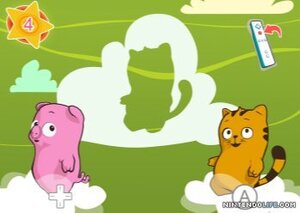
NLife: Learning with the PooYoos is a step in a new direction for the WiiWare service. What made you decide to go for this move?
DK: For us, the move seems quite obvious. The success of the Wii is overwhelming and Nintendo succeeded in attracting new players. A huge number of them have kids. And yet, the offer for specifically kid-oriented games is very thin.
NLife: There are very few games specifically designed for the 3-6 years' age group – it seems a hard market to develop for. What have you done to make this an experience that will work for this less co-ordinated audience?
DK: You’re totally right. It’s really hard to design a game for kids, especially when you know that a 3-year-old is very different from a 6-year-old. Among the challenges we face are: how can me make sure they can do what we ask them to do? How can we do to keep their attention? How can we deal with their specificities at 3,4, 5 or 6-year-old?
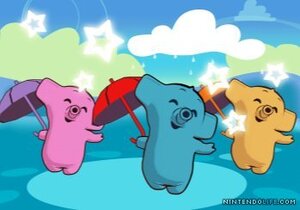
One important answer to that is experience. There is no secret: it’s very hard to improvise yourself a game designer for kids. You must have made many mistakes to be able, after several years, to create a good kid game. However, the most important thing relies in 3 words: tests, tests and tests. We spent hours and hours with kids to see how they reacted and this made us change many features of the game.
For instance, the younger are not comfortable when they need to aim with the Wiimote, let alone when they need to use the Nunchuck. Hence, the game can be play with the Wiimote only, and the parents can choose between two levels of difficulties: “Little Pooyoo” or “Big Pooyoo”. If they choose “Little Pooyoo”, the children doesn’t have to aim but shake the Wiimote at the right time.
NLife: What's it like designing a game for children? Do you sometimes find it hard to keep your creativity at a level the audience would understand?
DK: As John Ford used to say, the more constraints you have, the more creativity you can unleash. At Lexis Numérique, we really do believe it’s true. In addition, we think that children are much more intelligent that what is usually thought. You don’t have to do as if they were stupid to attract their attention. You can use humour that will also get their parent’s attention and even talk about art.
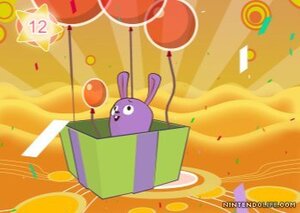
NLife: When developing the game, were there any significant setbacks?
DK: In fact, yes. We were about to finalise the game and it had been tested with many children. But to make sure everything was ok, we decided to bring new kids who were not used to playing the Pooyoo. The new tests were really hard for us. Many features that worked with the previous children didn’t work with the new ones. The previous group were knew the game too well. Hence we had to go back to work. Hopefully, all the tests we carried with new kids after all the changes are really promising.
NLife: Would you say are the benefits to a child playing your game as opposed to just sitting at home watching TV?

DK: One obvious thing is the interactivity. The Pooyoo really look like a TV show but the child has a real impact on what is happening. Funnily, many children actually talk to the game’s characters and answer their questions. They dance together, to sing together and the children even help the Pooyoo with the Wiimote.
One other important aspect is the interaction between the child and the parents. For instance, we saw many mothers and fathers dancing with their child during the test and this really pleased us a lot.
NLife: We noticed that this is a single player game only: do you feel the game would appeal more to a child like this, or was the lack of multiplayer down to resources?
DK: This is a very good question. When we began working on the Pooyoos, we had a multiplayer option. But we just realized that before 6, kids are just not willing to play with other kids. They are much more conformable when they are personally challenged in rewarded. This is the same as in real life: give a ball to a 4 years old – he will play with it by himself rather than playing with other children. This was also something we learnt with the tests.
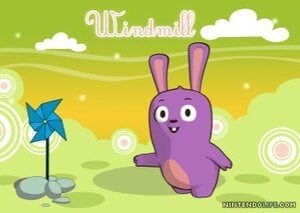
NLife: At present, WiiWare is still only hitting a relatively small proportion of the Wii owner market; how do you think you can break through this barrier and reach out to that audience?
DK: We strongly believe in Nintendo’s capacity to create a new offer and reshape the videogame market. Their announcement about the Wiiware Ambassador is a very strong one and we think it will have a very good impact. On our side, we also need to communicate toward an audience that are not core gamers and that would really benefit of this service.
NLife: What made you decide to opt for a WiiWare game and episodic distribution as opposed to a disc-based release?
DK: The 1st reason is that it’s extremely hard to have a kid game distributed in retail channel on the Wii, except when you’re Harry Potter or the Pokemon
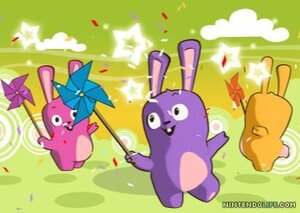
The second reason is that it enables us to propose a very high quality game at a very low price (500 Wiipoints) because we don’t have to bear the disc production costs.
NLife: How will you continue with the episodic content? Will you deviate much from the path of the first title in terms of the activities available?
DK: The idea is to propose new episodes that have the same structure but with original content. Some will focus a little bit more on letters, others on figures etc… In addition, we really want to bring some content that is not curriculum oriented but that can open the children’s mind in an original way: what is “cinnamon” and where does it come from? These kinds of little things that can seem useless but that can open a whole new world.
NLife: Finally, is there anything additional you'd like to mention about Learning with the PooYoos?
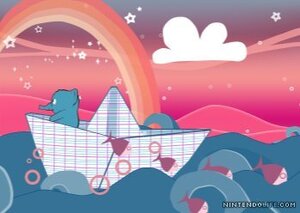
DK: Well, that’s a lot for talking about an independent studio like us. What more can I say? You have a Wii? You have kids? You can afford 500 Wii points? You know what to do : )
We’d like to say a big thank you to Djamil for taking his time to answer our questions on Learning with the PooYoos Episide 1, which was released in Europe today. Expect a full review soon…


Comments 16
Looks pretty awesome.
-"however, if there is one market that has yet to be tapped into on this service, it is that of drug using trip-out games."
fixed :>
Whilst we've decided to raise our daughter screen-free It's good to see something aimed at kids that takes their play patterns into account. Japan has had many such games, although they appear to be focused on learning numbers and letters (for the "baby genius" brigade) rather than purely fun.
It will be interesting to see how this performs as games targeting young children in Japan regularly chart in the top 20 when they appear.
Just dance, gonna be okay, da da doo doo... One song reference diserves another Enjoyed the read.
I'm glad that kids in this age group now have something on WiiWare.
Same here. Nice interview!
Any news when this will be released in NA? My nephew loves watching me playing, he likes to try Mario Kart but he's too young (just turned three) and I would love to buy him a game like this one.
Right... what IS cinnamon and from where does such come?
Treating children with the slightest bit of intelligence is nice to know.
For some reason, I almost want to buy this after reading the interview. Great marketing skills, Tom!
uhhh nintendo what are you thinkin?
@leon809: Care to elaborate?
Why oh why can´t the devs put language packs as dlc?? Just ship the game with game international language = english. Then add language packs as they are produced. Soo easy...
Defo gettin this one.looks ace.No I'm not jokin.
nice to see somebody aiming something towards the little ones. now all that`s needed is something to protect the wiimote from baby drool and teeth marks.
How about Humongous games for Wii? Putt-Putt, Fatty Bear and my favorite Freddy Fish. My kids loved them.
My kid is 2.5 and he loves this game. The start where the characters comes up to the screen to say hello after you wave at it with the wii remote. Very nicely implemented. Looking forward to more episodes for sure.
One thing: Why doesn't the game support widescreen?
Mange: Language packs as DLC are a great idea. LN take note!
Tap here to load 16 comments
Leave A Comment
Hold on there, you need to login to post a comment...